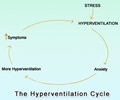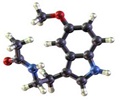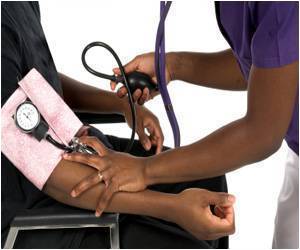A minor study reported at the American Heart Association's 60th Annual Fall Conference of the Council for High Blood Pressure Research reveals that kids with high blood pressure may be at risk of sleep breathing disorders.
The study was conducted on kids with high blood pressure, 60 % of whom were affected by a disorder called sleep disordered breathing (SDB). Short phases of upper airway obstructions cause SDB. These obstructions can be complete (apnea) or partial (hypopnea). SDB can also be caused by a longer period of insufficient air movement (obstructive hypoventilation).In the study, 60 percent of hypertensive children had a condition called sleep disordered breathing (SDB). SDB is characterized by short periods of upper airway obstructions that are complete (apnea) or partial (hypopnea), or a longer period of insufficient air movement (obstructive hypoventilation).
"SDB is important because it can result in daytime sleepiness, limited attention span, poor school performance, hyperactivity, poor growth and increased blood pressure in the lungs," said Alisa A. Acosta, M.D., lead author of the study and a Fellow in pediatric kidney disease and hypertension at the University of Texas Medical School at Houston.
"We know there's a link in adults between obstructive sleep apnea -- the most common of the SDBs -- and high blood pressure, so we were curious to see if the same link exists in our pediatric population," she said.
In obstructive sleep apnea (OSA), a person's airway repeatedly collapses or partially collapses during sleep. This results in brief periods of not breathing (apnea) followed by sudden attempts to breathe. The sleep disruptions lead to daytime fatigue and reduced cognitive performance. Another SDB, obstructive hypoventilation, is inadequate breathing to meet the body's needs.
Risk factors for SDB in children include obesity and enlarged tonsils. Some signs of SDB in a child include snoring, restless sleep, morning headaches and excessive daytime sleepiness. Researchers evaluated 15 boys and five girls (ages 4 to 18) with primary hypertension who snored or had enlarged tonsils or night-time high blood pressure. Each participated in a one-night sleep study.
Advertisement
Of the 20 children, 11 had nighttime high blood pressure; 17 had enlarged tonsils and adenoids; 18 were overweight (body mass index greater than 85th percentile), and all had a history of snoring. In the sleep study, researchers measured blood oxygen levels, airflow rates, and brain activity to look for levels that would indicate sleep disordered breathing.
Advertisement
The prevalence of SDB in all children is 2 percent. In addition, 40 percent of children with enlarged tonsils and 46 percent of obese children have SDB. In comparison, the current study of hypertensive children shows 59 percent (10 patients) with enlarged tonsils and 65 percent (11 patients) with obesity had SDB.
"Hypertension appears to be an additional risk factor for SDB, and further studies are needed to explore the relationship between the two," Acosta said.
Therapies for children with hypertension and SDB start with lifestyle changes, Acosta said. "We stress therapeutic lifestyle changes such as weight loss in all overweight kids and a low-salt diet." The children also need further evaluation by an ear, nose and throat (ENT) specialist.
Source-Eurekalert
GYT











